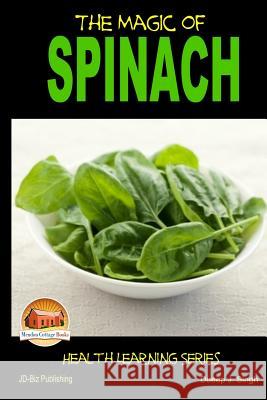The Magic of Spinach » książka
The Magic of Spinach
ISBN-13: 9781505631050 / Angielski / Miękka / 2014 / 46 str.
The Magic of Spinach Table of Contents Introduction When to Grow Spinach How to Plant Spinach Harvesting Spinach Best Spinach Varieties Spinach for Good Health Ancient power packed Spinach Health Tonic Problems Caused Due to Radiation Exposure Benefits of a regular Spinach Diet Spinach in Your Cuisine Choosing the Best Spinach Quick Steamed Spinach Introduction to Saag Traditional Saag Dry Spinach and Potatoes Lamb with Spinach Conclusion Author Bio Publisher Introduction If you were brought up reading Popeye comics or watching Popeye cartoons, in the 30s and 40s, you may have noticed that the sailor man could not do without his spinach. This was to give him plenty of strength and energy. Also in popular literature, broccoli, spinach and other green vegetables have been given a bad name, because they are supposedly not worth eating. Now that is a totally wrong misconception because spinach - Spinacia oleracea - is one of the most nutritious of greens available to mankind today. It is a native to southwestern Asia, from where it spread all over the world. Spinach leaves are dark green in color, and a plant can grow up to 28 - 30 cm in height. Spinach normally likes a temperate climate, but you can also grow this plant in a place where the winter is going to be mild. Spinach does not like a snowy weather climate. The fruit of the spinach is normally found in a lumpy and dry cluster, with a number of seeds in it. However, many gardeners do not allow the spinach to get to its fruition stage, because they would rather harvest the plant and sell it fresh, or eat it as a salad or cooked.
Zawartość książki może nie spełniać oczekiwań – reklamacje nie obejmują treści, która mogła nie być redakcyjnie ani merytorycznie opracowana.











